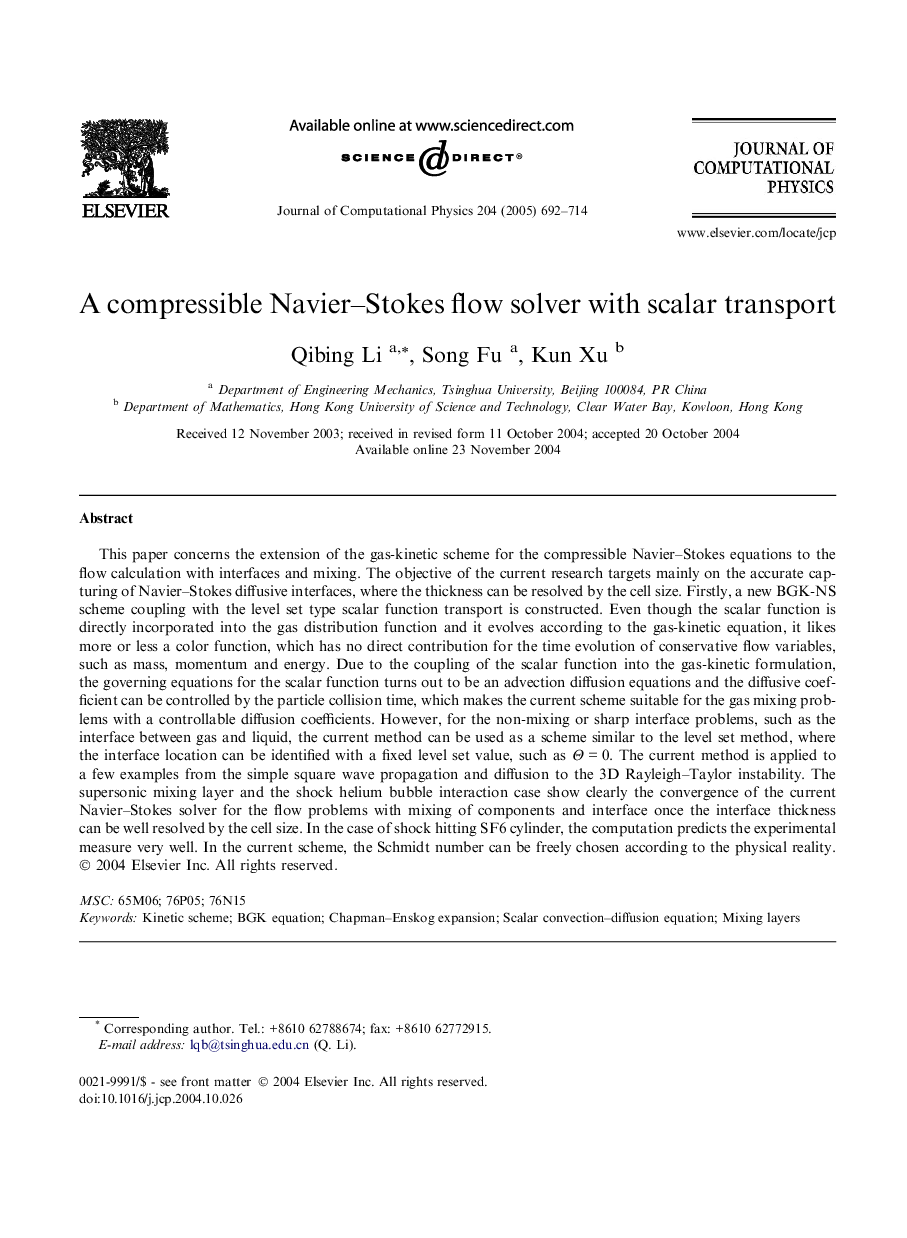| Article ID | Journal | Published Year | Pages | File Type |
|---|---|---|---|---|
| 10356423 | Journal of Computational Physics | 2005 | 23 Pages |
Abstract
This paper concerns the extension of the gas-kinetic scheme for the compressible Navier-Stokes equations to the flow calculation with interfaces and mixing. The objective of the current research targets mainly on the accurate capturing of Navier-Stokes diffusive interfaces, where the thickness can be resolved by the cell size. Firstly, a new BGK-NS scheme coupling with the level set type scalar function transport is constructed. Even though the scalar function is directly incorporated into the gas distribution function and it evolves according to the gas-kinetic equation, it likes more or less a color function, which has no direct contribution for the time evolution of conservative flow variables, such as mass, momentum and energy. Due to the coupling of the scalar function into the gas-kinetic formulation, the governing equations for the scalar function turns out to be an advection diffusion equations and the diffusive coefficient can be controlled by the particle collision time, which makes the current scheme suitable for the gas mixing problems with a controllable diffusion coefficients. However, for the non-mixing or sharp interface problems, such as the interface between gas and liquid, the current method can be used as a scheme similar to the level set method, where the interface location can be identified with a fixed level set value, such as ÎÂ =Â 0. The current method is applied to a few examples from the simple square wave propagation and diffusion to the 3D Rayleigh-Taylor instability. The supersonic mixing layer and the shock helium bubble interaction case show clearly the convergence of the current Navier-Stokes solver for the flow problems with mixing of components and interface once the interface thickness can be well resolved by the cell size. In the case of shock hitting SF6 cylinder, the computation predicts the experimental measure very well. In the current scheme, the Schmidt number can be freely chosen according to the physical reality.
Related Topics
Physical Sciences and Engineering
Computer Science
Computer Science Applications
Authors
Qibing Li, Song Fu, Kun Xu,
